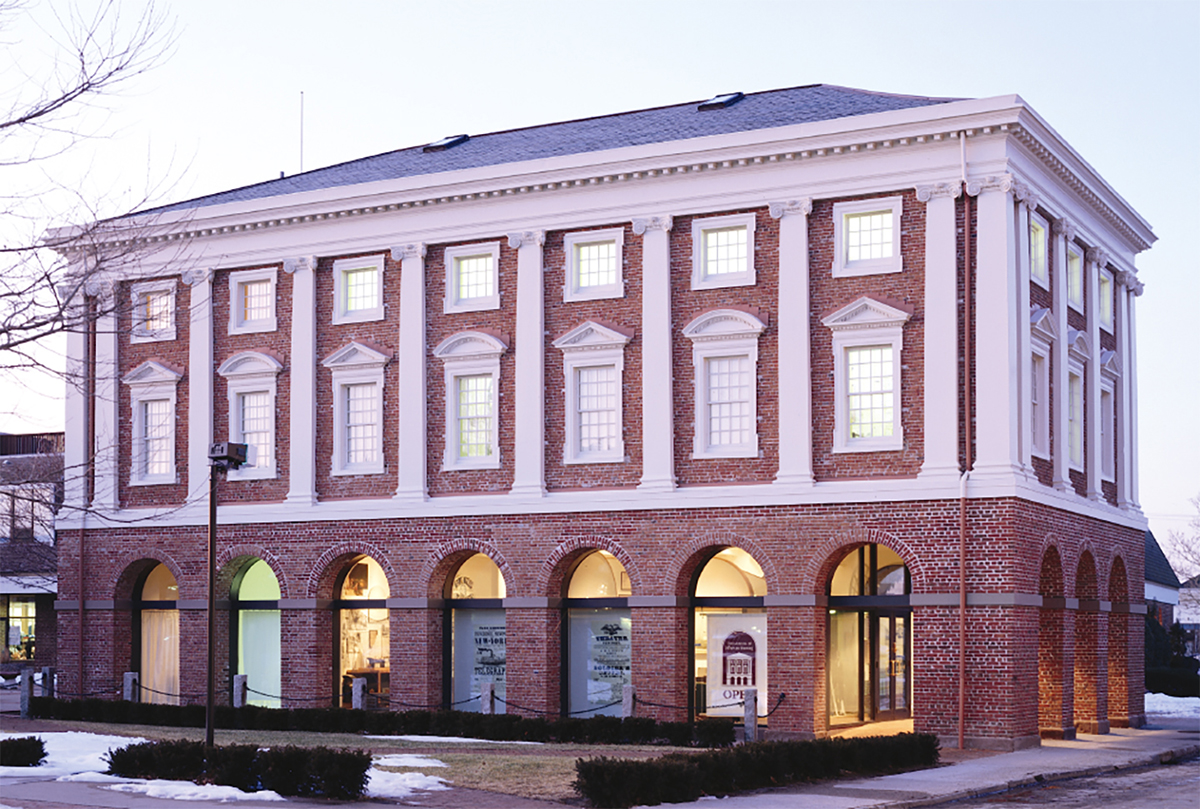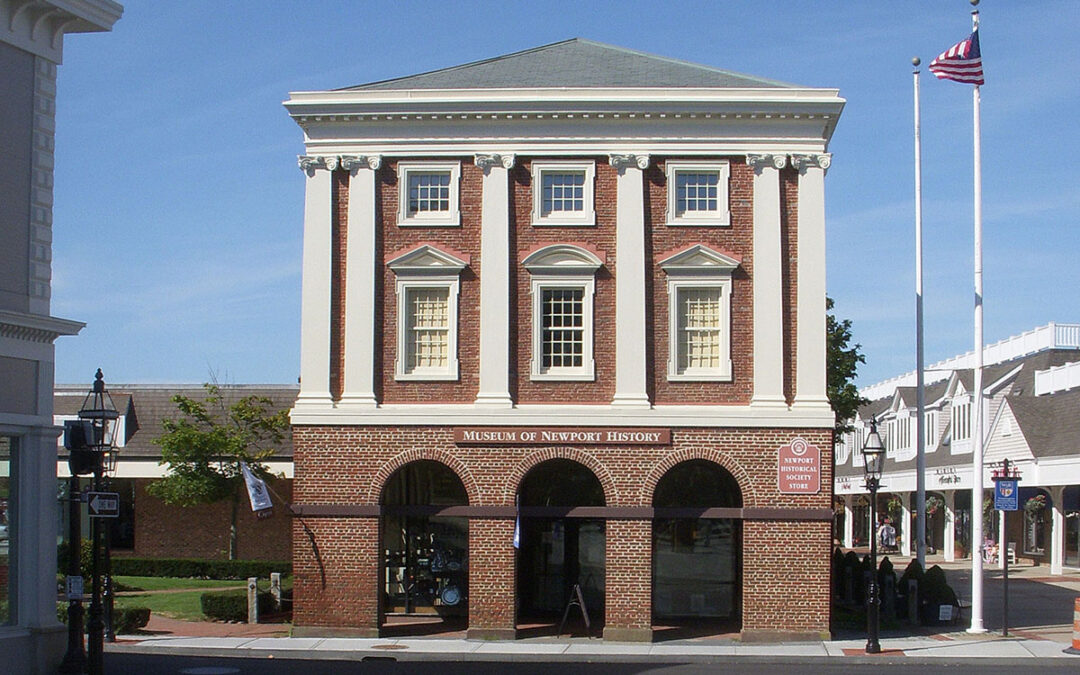Brick Market Front Façade – Newport, RI

Palazzo del Capitanio Front Façade – Venice, Italy
At the center of historic Newport, Rhode Island sits the Brick Market. This structure is an important historic building and was designed by the renowned architect Peter Harrison in 1762. Peter Harrison (1716-1775) was an English-born architect who emigrated to the American Colonies at a young age and worked extensively in Newport during the 18th century. His designs were influenced by the Georgian style that was popular in England at the time, and he is best known for his work on public buildings, including the Redwood Library (1739) and the Touro Synagogue (1763). He is sometimes called “America’s first architect” as he was among the earliest to limit his work to the design of the building and to hand off those designs to others to construct, which has highly unusual during the American colonial period.

Brick Market Side Façade – Newport, RI
The Brick Market was built to serve as a commercial center for the city of Newport. Located at the intersection of Long Wharf and Thames Street, the building was strategically situated to serve Newport’s status as a major trading port. The Brick Market was built in the distinctive red brick that gives the building its name, which had to be imported. This made the building not only more long-lasting than the wood structures that surrounded it, but also was a visual indication of the structure’s elevated civic status. The design of the building was inspired by the architecture of the Royal Banqueting House designed by Inigo Jones in London in 1619, and features a grand arcade with Romanesque arches that span the length and width of the building. It is an excellent example of the Neo-Classical Architectural idea that was made popular by the Italian architect Andea Palladio (1508-1580) who in turn was a scholar of the writings of the ancient Roman architect Vitruvius (80-15 BC).
The building was open at the ground level and housed merchants who sold a wide variety of goods including textiles, furniture, and imported goods from Europe and the West Indies. In addition to its role as a commercial hub, the Brick Market also played an important role in the social life of Newport. The arcade that runs the length of the building provided a covered space where people could gather and socialize. The building also housed a large ballroom on the second floor, which was used for dances and other social events.

Banquetting House Side Façade – London, England
Over the years, the Brick Market has undergone many changes. The ballroom on the second floor was later used as a printing house, converted into a theater in the 19th century, and the building was used as a customs house in the 20th century. The building fell into disrepair in the mid-20th century, however, a group of concerned citizens organized in 1968 to save the building and restore it to its former glory under the leadership of historian Ralph Carpenter.
Today, the Brick Market is a popular tourist destination in Newport. The building has been restored to its original exterior appearance, and it houses the Museum of Newport History, which documents the story of Newport’s history, including its role as a major center of trade in the colonies. The building is an important example of colonial architecture, and it was listed on the registry of National Historic Landmarks, the highest designation, in 1968.
Throughout the many rises and falls of the Newport economy, from before the Revolutionary War until the present day, the Brick Market has remained a central landmark on Washington Square. Although it is no longer the center of commerce that it once was, it remains an important reminder of Newport’s importance as a colonial trading center and the city’s central place in American Architecture during that era.
Ross Cann, RA, AIA, LEED AP, who lives and works in Newport, RI, is an author, historian, and Founding Principal of A4 Architecture. He holds honors degrees in Architectural History and Design from Yale, Cambridge, and Columbia Universities and has taught at numerous institutions as well.
